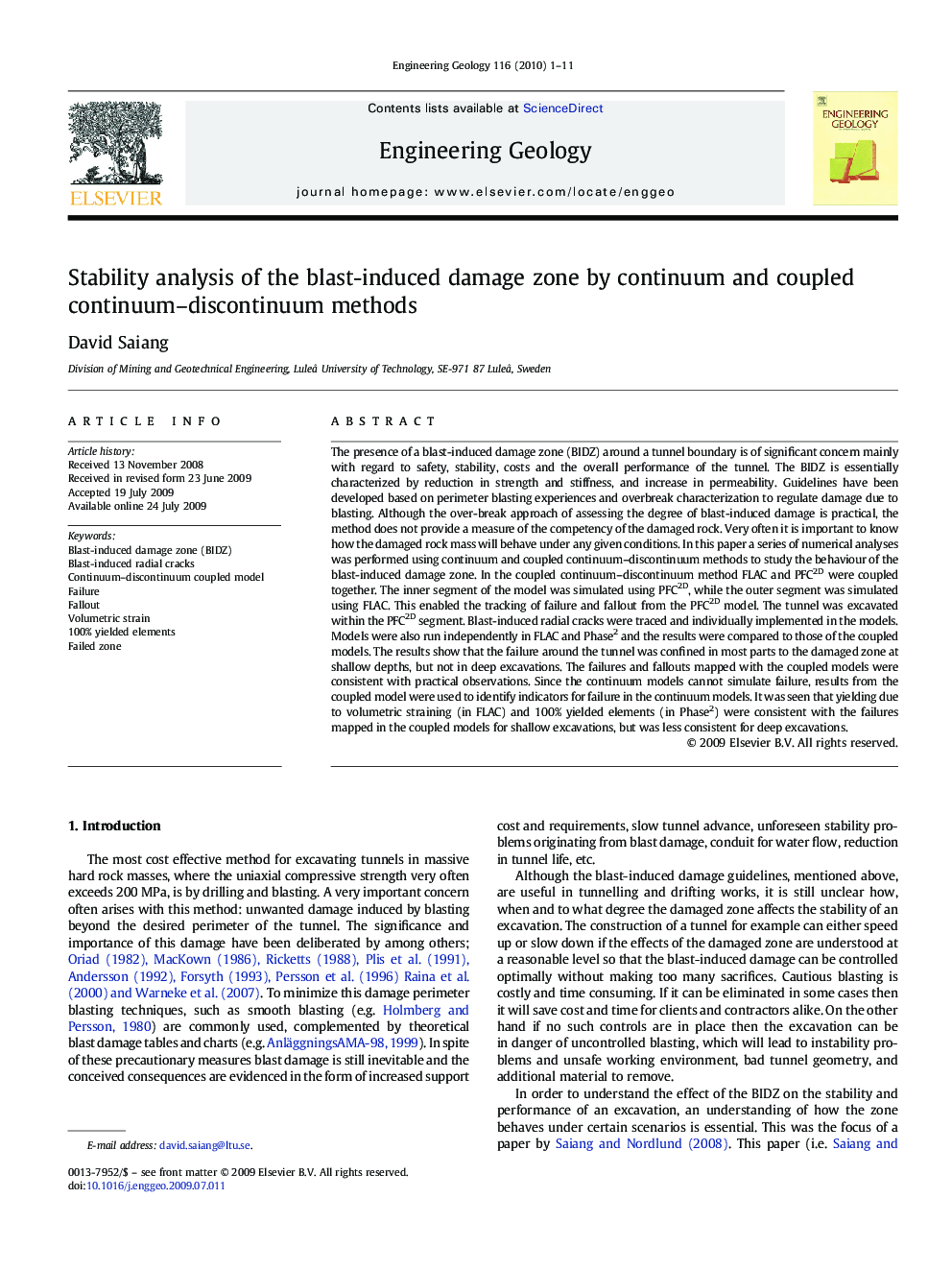| کد مقاله | کد نشریه | سال انتشار | مقاله انگلیسی | نسخه تمام متن |
|---|---|---|---|---|
| 4744461 | 1641862 | 2010 | 11 صفحه PDF | دانلود رایگان |

The presence of a blast-induced damage zone (BIDZ) around a tunnel boundary is of significant concern mainly with regard to safety, stability, costs and the overall performance of the tunnel. The BIDZ is essentially characterized by reduction in strength and stiffness, and increase in permeability. Guidelines have been developed based on perimeter blasting experiences and overbreak characterization to regulate damage due to blasting. Although the over-break approach of assessing the degree of blast-induced damage is practical, the method does not provide a measure of the competency of the damaged rock. Very often it is important to know how the damaged rock mass will behave under any given conditions. In this paper a series of numerical analyses was performed using continuum and coupled continuum–discontinuum methods to study the behaviour of the blast-induced damage zone. In the coupled continuum–discontinuum method FLAC and PFC2D were coupled together. The inner segment of the model was simulated using PFC2D, while the outer segment was simulated using FLAC. This enabled the tracking of failure and fallout from the PFC2D model. The tunnel was excavated within the PFC2D segment. Blast-induced radial cracks were traced and individually implemented in the models. Models were also run independently in FLAC and Phase2 and the results were compared to those of the coupled models. The results show that the failure around the tunnel was confined in most parts to the damaged zone at shallow depths, but not in deep excavations. The failures and fallouts mapped with the coupled models were consistent with practical observations. Since the continuum models cannot simulate failure, results from the coupled model were used to identify indicators for failure in the continuum models. It was seen that yielding due to volumetric straining (in FLAC) and 100% yielded elements (in Phase2) were consistent with the failures mapped in the coupled models for shallow excavations, but was less consistent for deep excavations.
Journal: Engineering Geology - Volume 116, Issues 1–2, 27 October 2010, Pages 1–11